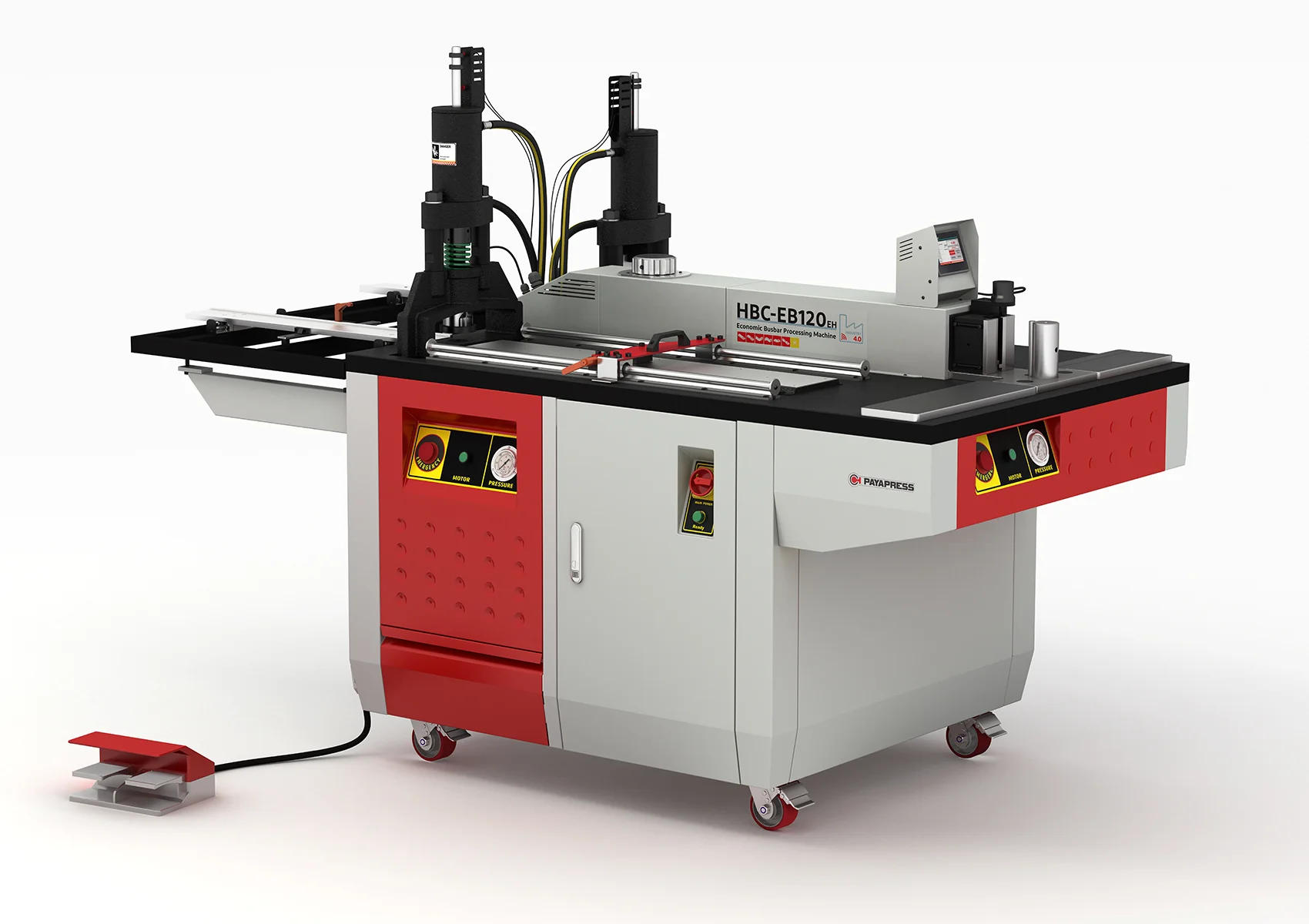Modern electrical systems, from power distribution networks to industrial control panels, rely on efficient and reliable methods of conducting electricity. While wires and cables fulfill essential roles, the busbar stands as a critical component for high-current distribution, offering superior conductivity, design flexibility, and enhanced safety. This article will explore the vital role busbars play in modern electrical systems and highlight the advanced machinery utilized in their fabrication.
Busbars, essentially metallic bars or strips of copper or aluminum, serve as common connection points for multiple circuits. Their primary function is to distribute electrical power from a source to various loads within a system. Unlike wires, busbars possess a significantly larger cross-sectional area, enabling them to handle substantial currents with minimal voltage drop and heat generation. This characteristic is particularly crucial in high-power applications where efficient power transfer is paramount.
The advantages of employing busbars extend beyond their current-carrying capacity. Their robust and often standardized designs facilitate easy connection and disconnection of equipment, simplifying maintenance and system upgrades. Furthermore, busbars offer improved thermal management compared to bundled wires, dissipating heat more effectively and reducing the risk of overheating and potential fire hazards. The defined physical arrangement of busbars also contributes to a more organized and easily maintainable electrical installation.
Busbars are found in a wide array of applications, including:
- Switchgear and Control Panels: Distributing power to various circuit breakers and control devices.
- Power Substations: Connecting transformers, circuit breakers, and transmission lines.
- Industrial Machinery: Supplying power to motors, drives, and other high-power equipment.
- Data Centers: Ensuring reliable power distribution to critical servers and networking infrastructure.
- Renewable Energy Systems: Connecting solar panels, wind turbines, and energy storage devices.
- Electric Vehicle Charging Stations: Distributing power to multiple charging points.
The manufacturing of high-quality busbars requires specialized equipment capable of precise cutting, bending, and punching. These processes are essential to achieve the desired shape, dimensions, and electrical performance characteristics necessary for optimal system integration. The need for accurate and efficient busbar fabrication has led to the development of sophisticated machinery designed for this purpose.

Among the leading manufacturers of busbar fabrication equipment is PAYAPRESS, renowned for its comprehensive range of machines designed to meet the diverse needs of the electrical industry. PAYAPRESS offers a broad spectrum of solutions, from manual tools to fully automated systems, all engineered to deliver precision, efficiency, and reliability. A critical component of PAYAPRESS’s offerings is their busbar bending machine. These machines are specifically designed to accurately form busbars into complex shapes, allowing for customized configurations and efficient space utilization within electrical enclosures.
The precision afforded by a dedicated busbar bending machine is essential for maintaining the integrity of the busbar and ensuring optimal electrical performance. Bending busbars manually can lead to inconsistencies in shape and potential damage to the material, increasing the risk of stress fractures and reduced current-carrying capacity. PAYAPRESS’s bending machines employ advanced control systems and tooling to ensure consistent and accurate bends, minimizing material deformation and maximizing the lifespan of the busbar.
For high-volume production or applications requiring extreme precision, PAYAPRESS offers a range of hydraulic busbar bending machine. These machines utilize hydraulic power to deliver the necessary force for bending thicker and wider busbars, while maintaining precise control over the bending process. The use of hydraulic power allows for smoother and more consistent bends, even on larger busbar profiles, resulting in improved electrical performance and reduced material waste. The hydraulic busbar bending machine also offers increased efficiency due to the ease and speed of operation, leading to higher throughput in manufacturing environments. Furthermore, the enhanced safety features often incorporated into hydraulic systems, such as overload protection, contribute to a safer working environment.
Beyond bending, PAYAPRESS also offers solutions for cutting, punching, and other essential busbar fabrication processes. Their commitment to innovation and quality ensures that their machines are equipped with the latest technologies to meet the evolving demands of the electrical industry. By investing in PAYAPRESS busbar fabrication equipment, manufacturers can significantly improve their production efficiency, reduce material waste, and enhance the quality of their electrical systems.
In conclusion, busbars are indispensable components in modern electrical systems, providing a reliable and efficient means of distributing high currents. Their superior conductivity, design flexibility, and enhanced safety features make them the preferred choice for a wide range of applications. The accurate and efficient fabrication of busbars is critical to ensuring their optimal performance. PAYAPRESS, with its comprehensive range of busbar fabrication equipment, including the crucial busbar bending machine and the powerful hydraulic busbar bending machine, plays a vital role in enabling the production of high-quality busbars that underpin the reliability and efficiency of modern electrical systems. As electrical systems continue to evolve and demand higher performance, the role of busbars and the advanced machinery used to fabricate them will only become more important.






No comment